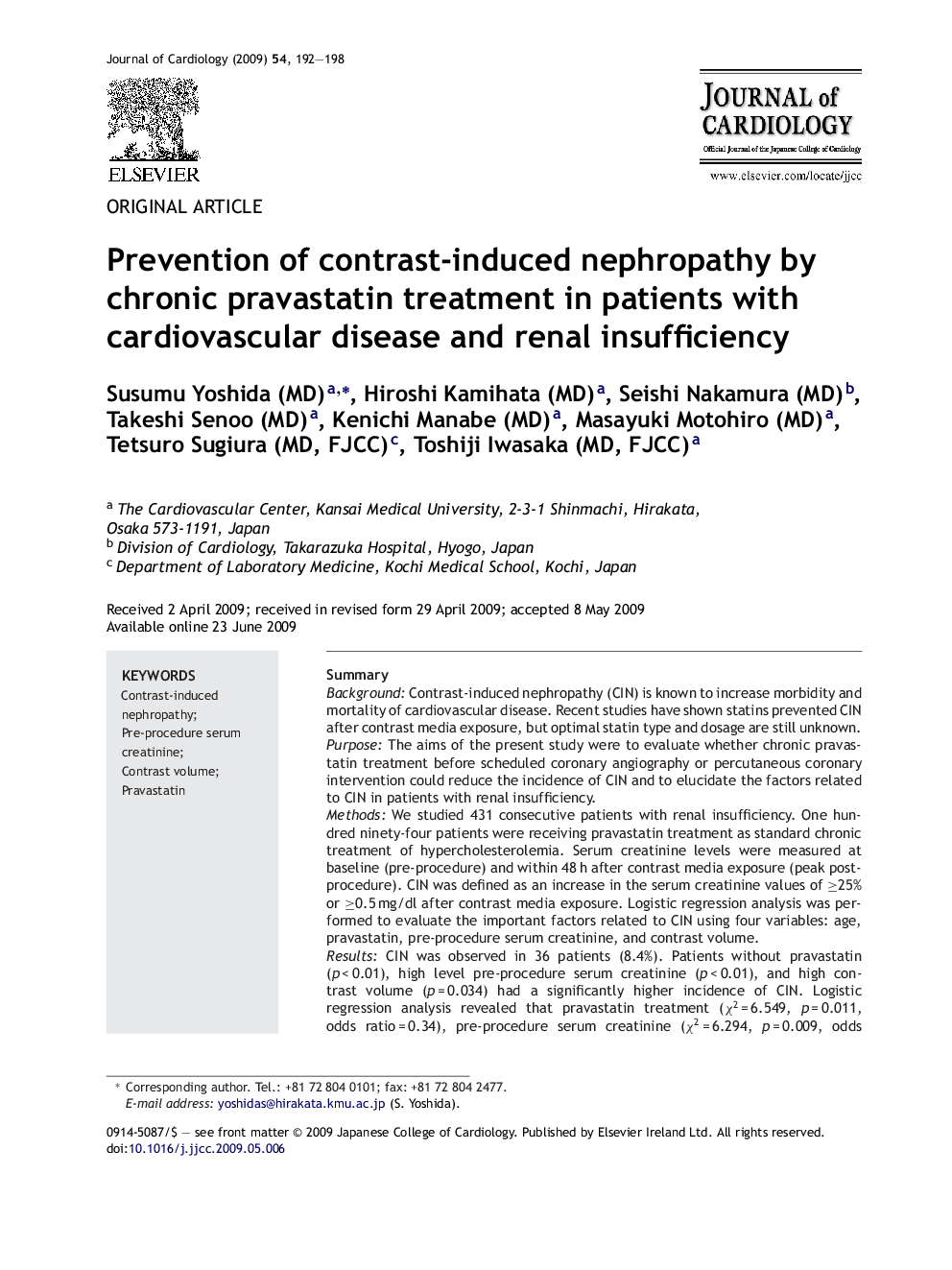| Article ID | Journal | Published Year | Pages | File Type |
|---|---|---|---|---|
| 2963679 | Journal of Cardiology | 2009 | 7 Pages |
SummaryBackgroundContrast-induced nephropathy (CIN) is known to increase morbidity and mortality of cardiovascular disease. Recent studies have shown statins prevented CIN after contrast media exposure, but optimal statin type and dosage are still unknown.PurposeThe aims of the present study were to evaluate whether chronic pravastatin treatment before scheduled coronary angiography or percutaneous coronary intervention could reduce the incidence of CIN and to elucidate the factors related to CIN in patients with renal insufficiency.MethodsWe studied 431 consecutive patients with renal insufficiency. One hundred ninety-four patients were receiving pravastatin treatment as standard chronic treatment of hypercholesterolemia. Serum creatinine levels were measured at baseline (pre-procedure) and within 48 h after contrast media exposure (peak post-procedure). CIN was defined as an increase in the serum creatinine values of ≥25% or ≥0.5 mg/dl after contrast media exposure. Logistic regression analysis was performed to evaluate the important factors related to CIN using four variables: age, pravastatin, pre-procedure serum creatinine, and contrast volume.ResultsCIN was observed in 36 patients (8.4%). Patients without pravastatin (p < 0.01), high level pre-procedure serum creatinine (p < 0.01), and high contrast volume (p = 0.034) had a significantly higher incidence of CIN. Logistic regression analysis revealed that pravastatin treatment (χ2 = 6.549, p = 0.011, odds ratio = 0.34), pre-procedure serum creatinine (χ2 = 6.294, p = 0.009, odds ratio = 2.78), and contrast volume (χ2 = 4.484, p = 0.034, odds ratio = 1.01) were independently related to the decreased risk of CIN.ConclusionsChronic pravastatin treatment before contrast media exposure was important for preventing CIN in patients with renal insufficiency. Also, reducing the dose of contrast media was important for preventing CIN in patients with high-baseline serum creatinine levels.
